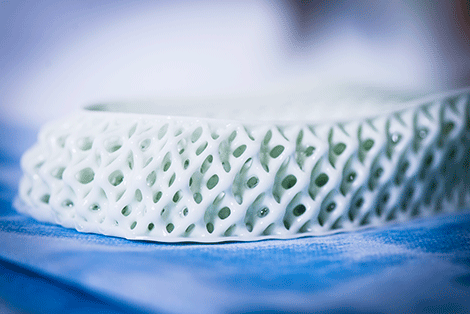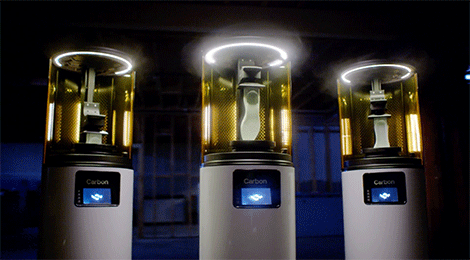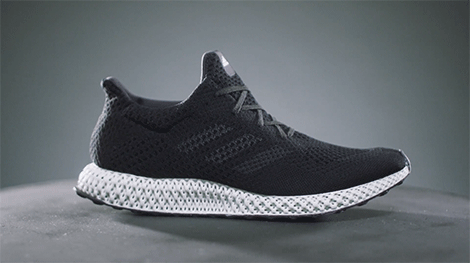
The Adidas Futurecraft 4D features a 3D printed midsole, that will go into mass production later this year
Adidas’ latest Futurecraft initiative has seen it partner with Carbon to produce a 3D printed midsole that is a marked improvement on the brand’s own endeavour just 18 months ago, and which looks to revolutionise its future product development process.
Using Carbon’s CLIP technology, where speed of build allows for an intriguing range of production-grade materials to be printed, the elastomer used for the latest Adidas Futurecraft 4D shoe negates the need to move to injection moulding for final product – allowing the full shape and form benefits of 3D printing to come to the fore.
The development process enabled Adidas to iterate over 50 different lattices for the midsole before landing on the current design – with each iteration produced using the same process and material as the ultimate product.

Carbon’s EPU 40 material was chosen to build the midsole
Not simply for aesthetic review, these midsoles could be tested for performance in the design stage, leading to Carbon claiming its technology can make traditional prototyping obsolete.
“Gone are the days when it was necessary to prototype a product using a technology that does not allow for scale-up,” boasts an accompanying statement from Carbon.
The project has obviously excited Adidas, leading it to Eric Liedtke, Adidas group executive board member responsible for global brands, to state that it has allowed the company to venture ‘beyond limitations of the past, unlocking a new era in design and manufacturing’ and into one driven by athlete data and an agile manufacturing processes.
“By charting a new course for our industry, we can unleash our creativity – transforming not just what we make, but how we make it,” Liedtke added.
The sportswear brand claims it will produce more than 5,000 units later this year, while it will reach 6-digit production numbers by 2018.
Carbon has developed a proprietary print strategy for the midsoles that enables printing with essentially zero support material, not only saving on raw material costs, but also dramatically reducing manual post-processing steps of traditional additive manufacturing.

6-digit production figures are expected by 2018
Carbon’s EPU 40 was the only ‘off the shelf’ 3D printable material that came close to the requirements for this application, meaning the in-house materials team at Carbon worked on over 150 different material formulations to achieve the final desired mechanical properties, while fine-tuning the color of the material to match the signature linen-green color of the launch shoe chosen by the Adidas’s design team.
The Adidas Futurecraft project continues to build on the German sportswear giant’s goal for new digital manufacturing factories, beginning in the German town of Ansbach that will use robots, 3D printing and knitting machines to produce the latest footwear.






